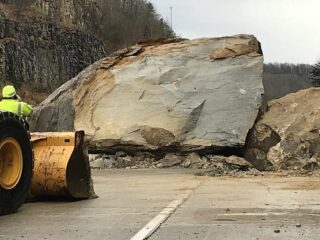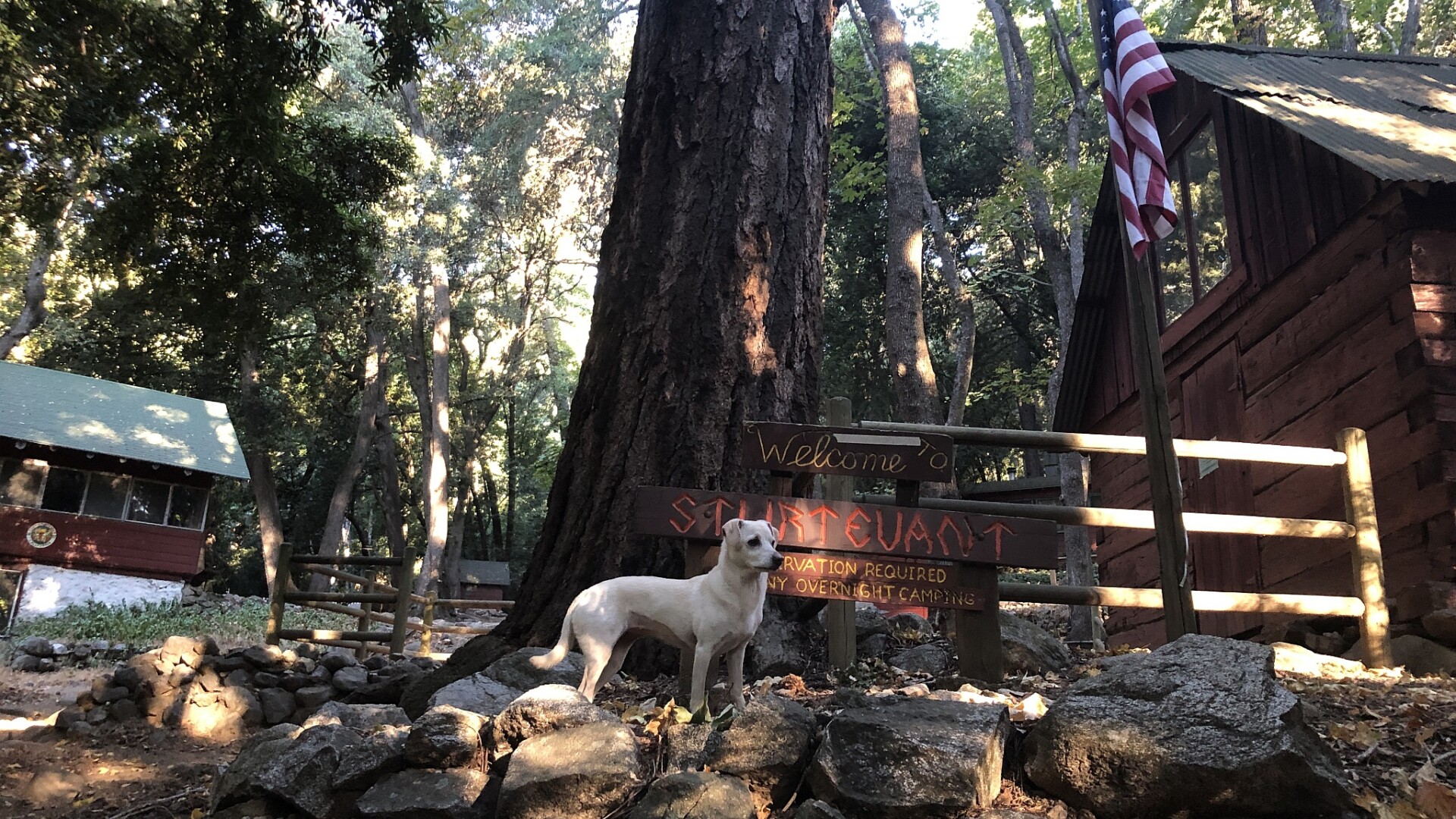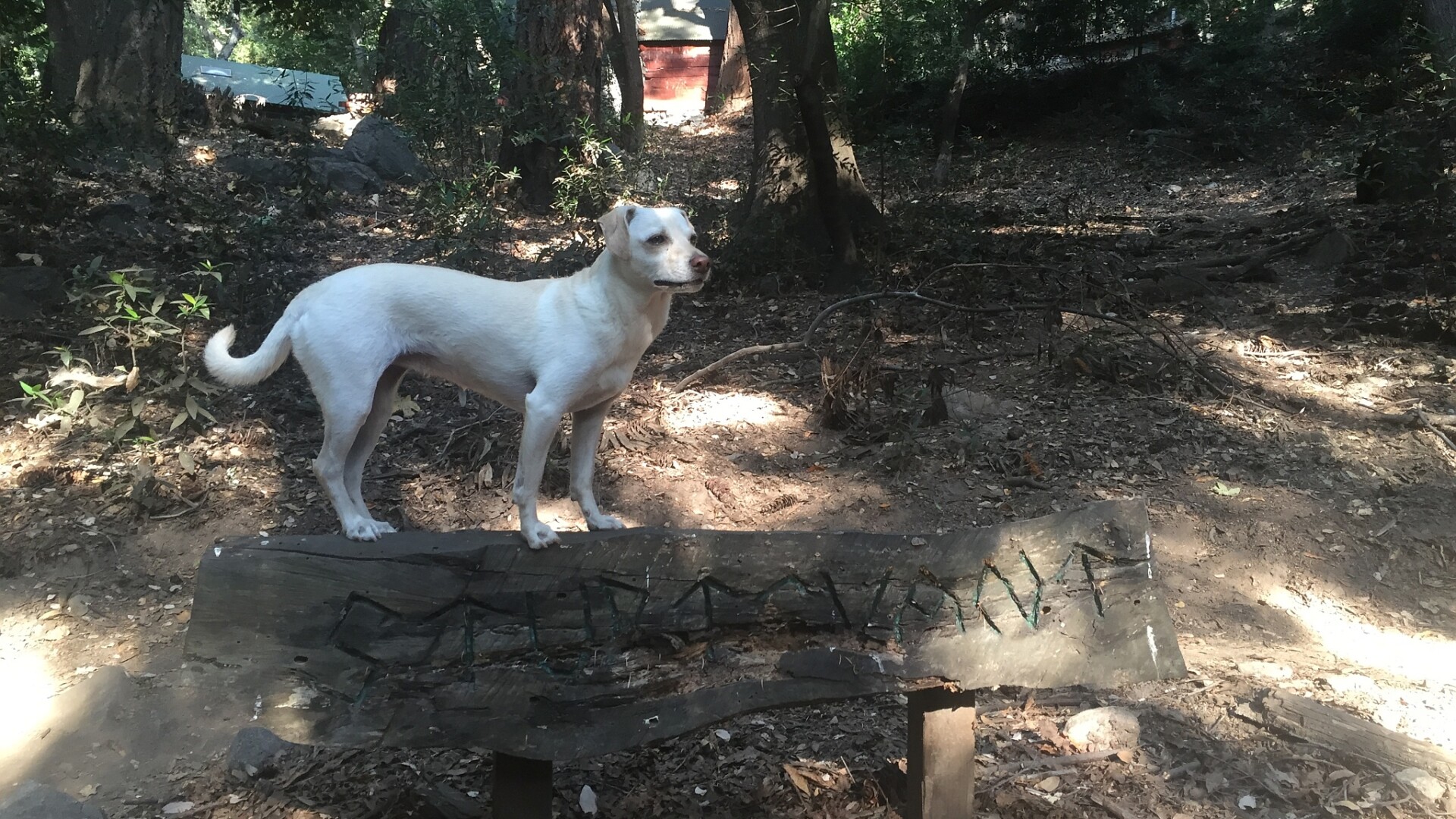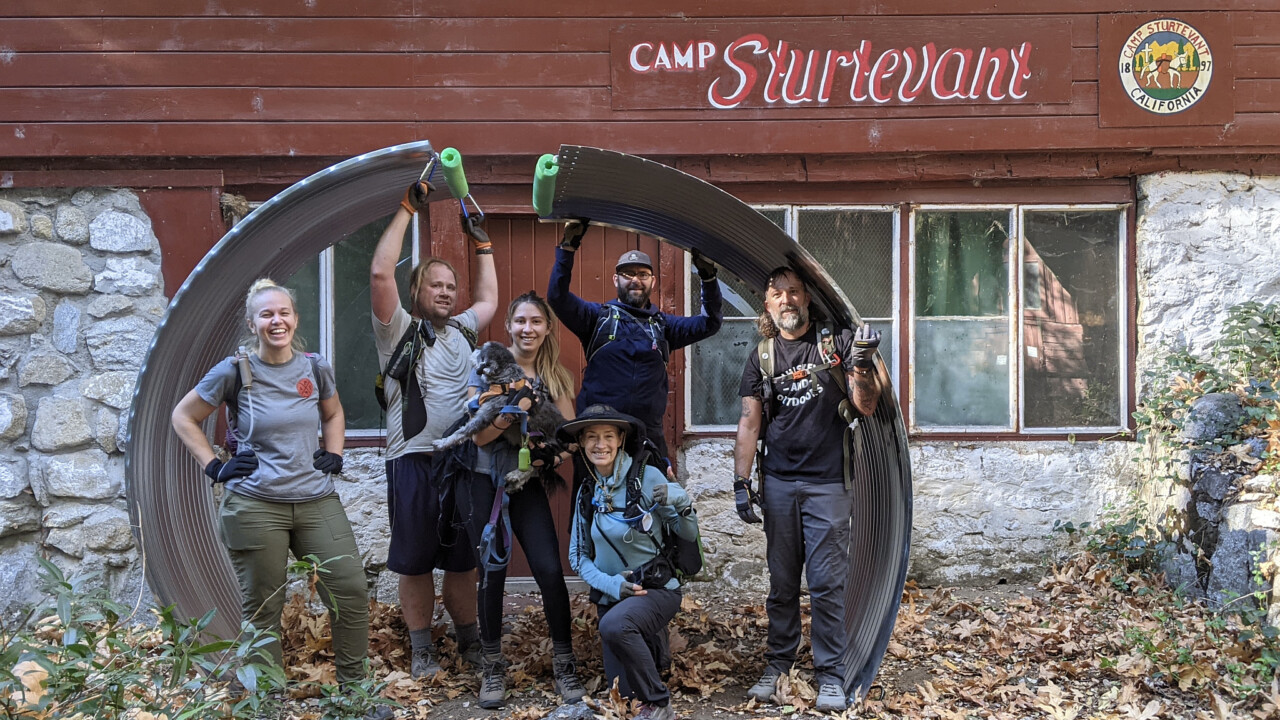Sing along now: “How many boots must a hiker lace up, before you can call it a day?” —or a season, or a year? OK, not quite rhyming enough, but you get the idea. 2021 has been a ‘second verse, same as the first’ with the effects of 2020’s Bobcat fire continuing to ripple through this year—oh, and that pandemic thing too!
So congratulations to everyone who has come thus far, and condolences for those lost along the journey’s way. Up at Camp, the seasons persisted with a lovely showing of golden maple leaves this fall. Now we hope for rain while looking back on a busy year of many volunteers putting boots on the trail and sweat on their brows.
- The major effort to reclaim and improve the water system is 95% done after lots of hard-rock digging and new pipes; now all we need is lots of water running through them.
- The Quench campaign to fund two new water tanks was an overflowing success: a waterfall of thanks again to all who contributed—see below about ‘unfinished business’.
- The new water tanks are finally on-site/in-Camp with more bits and pieces coming up on the burros around Christmas. The new year will see them assembled and hooked into the plumbing system.
- The frequent destructive incursions of bears into Camp buildings has slowed down, and we look forward to making more permanent repairs that restore the “rustoric” look of the Camp (that’s Rustic + Historic, right?)
- All of this has been accomplished safely with no injuries, despite the continuing instability of the trails, and many volunteers serving as pack animals carrying awkward repair materials.
- AND in compliance with post-fire USFS safety guidelines, all of the work has been done in one-shot day trips: many legs – hearts – lungs + spirits are the stronger for it!
Unfinished Business
Most fundraisers offer thank-you incentives and souvenirs to donors—T-shirts, tote bags, etc. There are a few of those for the Quench campaign, but we also promised something special to many donors: luncheons at Chantry and at Camp. We are cooking on those plans!
But the upcoming extended Chantry Road closure (see below) has put a troublesome roadblock in front of the immediate future. It means we’ll have to work with L.A. County to figure out how and when we can deliver on those promised events. And we’ll need your feedback to figure out the best, most inclusive solutions, so please watch your email in-box for customized messages and reply with your preferences.
The Road to Somewhere
 The Chantry Road has experienced a lot of drama over the years, but the upcoming closure* for repair/reconstruction will introduce something new. Previous repairs have been one of two types: bulldozing debris avalanches off the road, or when the road washes out, rebuilding the base and pouring new pavement.
The Chantry Road has experienced a lot of drama over the years, but the upcoming closure* for repair/reconstruction will introduce something new. Previous repairs have been one of two types: bulldozing debris avalanches off the road, or when the road washes out, rebuilding the base and pouring new pavement.
The section due for repair now is of the second kind, but the county will do a much more radical fix: rather than try to build a new base, the whole section will be removed, and a bridge will be constructed in its place—perhaps similar to the Bridge to Nowhere, but it will actually get you somewhere—Chantry Flats!
Breaking News: Sometime/Later
Latest word is that the County has run into the same supply and contractor problems challenging many industries following the pandemic. The result is the Chantry Road work is now re-scheduled to start in February next year; with a six-month work plan, that pushes the re-opening of the road into August 2022. But the County has also acknowledged that possible winter weather plus supply delays could stretch completion into spring 2023.
The Board of the Sturtevant Conservancy is in contact with both L.A. County and the USFS with serious concern for the closure’s impact on the Camp (and to join in support for the Adams Pack Station.)
Whenever the USFS opens the Big Santa Anita Canyon to the public— which is accessible by trails from Mt. Wilson and Newcomb’s Pass—the Camp might be able to develop some work-arounds to the road closure: literally, walking around the project or walking/hiking down from Mt. Wilson (and back up!) But there’s no underestimating the negative impact on the Camp’s basic business. Stay tuned for more news as it becomes available.

Interview: the Generous Hiker’s Guide to DAFs & EFTs
Coming to the close of the tax year for charitable donations, one regular Camp supporter emailed to deliver a gift in an alternative mode. The Camp’s General Manager Gary Keene interviewed Jon Neustadter to better understand and share both how he gives and why.
GK: Jon, what’s your connection to the Camp?
JN: Since at least 2010 – and likely well before – I’ve been hiking the 9-mile loop from Chantry to Spruce to Sturtevant, then over that downed tree with my dog (and the help of a makeshift metallic step) up to Mount Zion, and back via Lower Winter Creek Trail, and the Camp has always been a joyous highlight of the hike.
GK: A lot of people come through Camp on that hike, but for you there was something more; what was it?
JN: Several times we were greeted warmly by the Camp Manager, and often we would play some ping pong in the Lodge and look at the historical photos. I also loved the swing. It’s just a fun and special place to stop at on a gorgeous hike. All my visits just seemed special – a place that was well kept, friendly, and inviting even to a hiker who wasn’t staying at Camp.
GK: It led to you being generous to the Camp—thank you!— but in a different way technically: you asked us to set up an electronic fund transfer (EFT) from your ‘donor advised fund’. There are two things there—the fund and the transfer—that others might not be familiar with. Help us understand all that, and how it works for making charitable donations.
JN: Yes, a donor advised fund (or ‘donor managed investment account’) is easy, and it helps me manage and track all my donations in one place. Basically, it’s a charitable giving mechanism where you get a full tax deduction at the time you fund the account, but you retain investment management rights over the account; then you request (really, direct) donations from the account to charities you select whenever you choose.
GK: Sounds straight forward; are there other advantages for giving in this way?
JN: There are several other advantages: the fund can grow (or lose) with the market without any tax consequences, so it’s possible to request a larger donation than what you made originally. Another tax advantage is that you can contribute many kinds of assets, such as securities at their current market value, without any tax consequences. Also, there is no need to get a letter from non-profits for tax deduction purposes, which saves time and resources both for me and for the receiving non-profits.
As for the EFT, it’s simply how the donation gets delivered, but it also saves time and resources and is more secure; there’s no paper check, envelope, or risk of slow or lost mail.
GK: Your support will contribute to our reopening when the Canyon is opened to the public; what would you like to see on your first return hike into Camp?
JN: I would love to see a Camp Manager with a dog and chat with them about how Camp life has been wonderful lately.
GK: We have both—managers and their dogs! Just as soon as we can welcome the public, we’ll invite you up. Thanks again for giving us the means to move forward.
For an example of a donor advised fund, see www.fidelitycharitable.org/guidance/philanthropy/what-is-a-donor-advised-fund.html

Binocular Report
See all the above! The future is pretty darn cloudy, given the forest closure, road closure, and the projected dry winter. But we have a great network of volunteers, donors, supporters, and ready-to-be-guests. Although the Camp remains closed for business, we’re still busy with repair and improvement projects: funding these projects is now entirely dependent on charitable donations of time, talents and dollars. You can help with any or all of these!
Visit the Volunteer and Donate pages and keep in touch here as we find our way forward on the trail into 2022.
